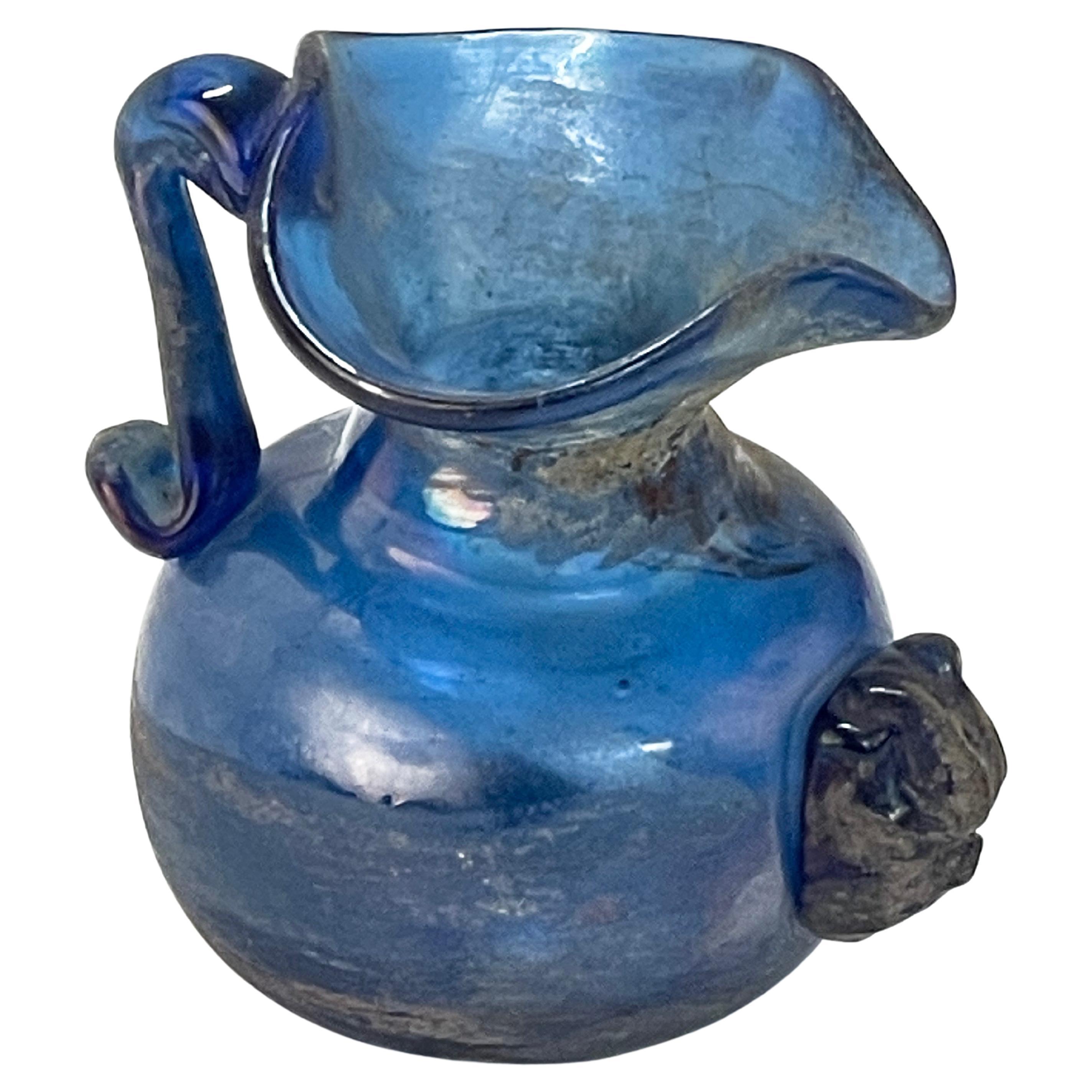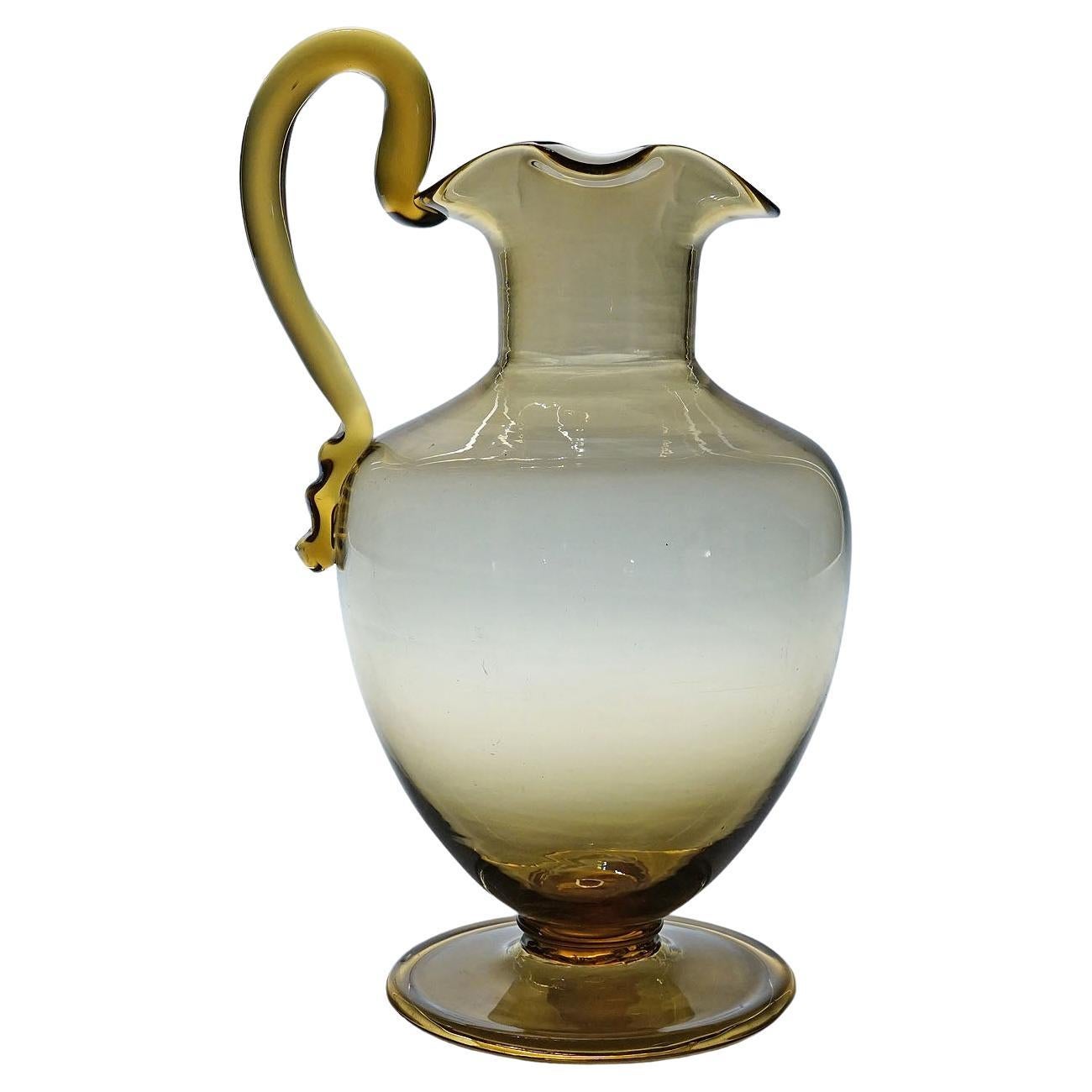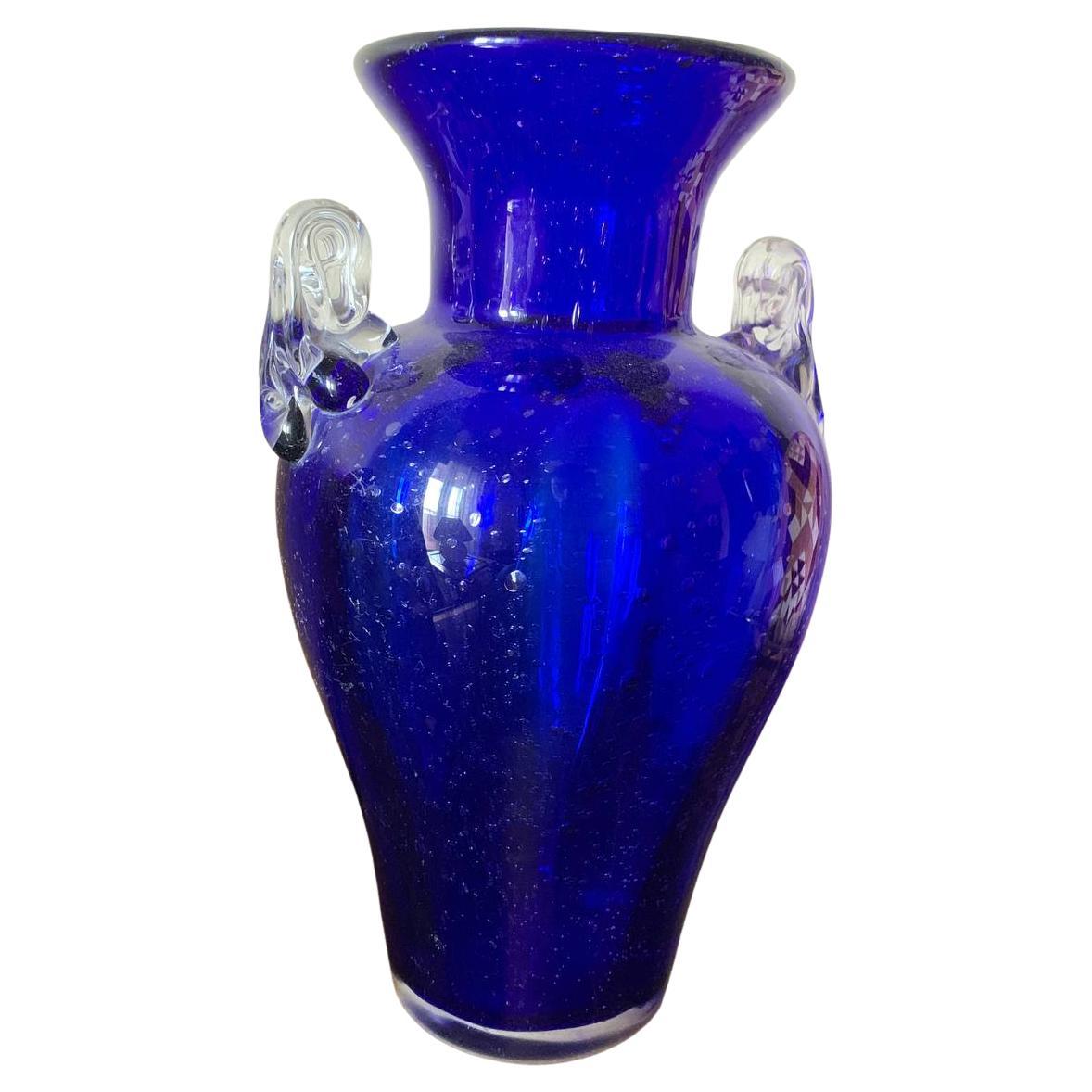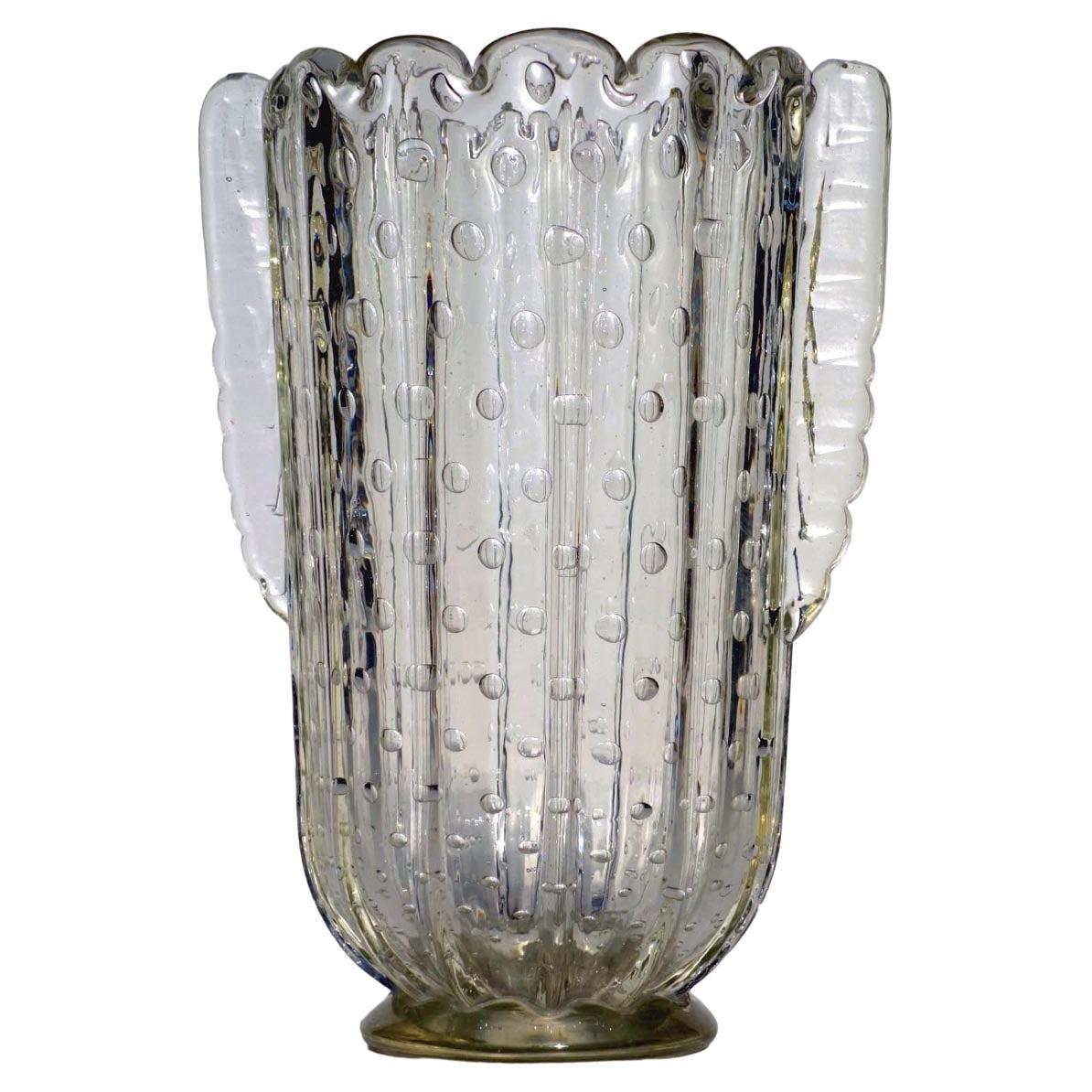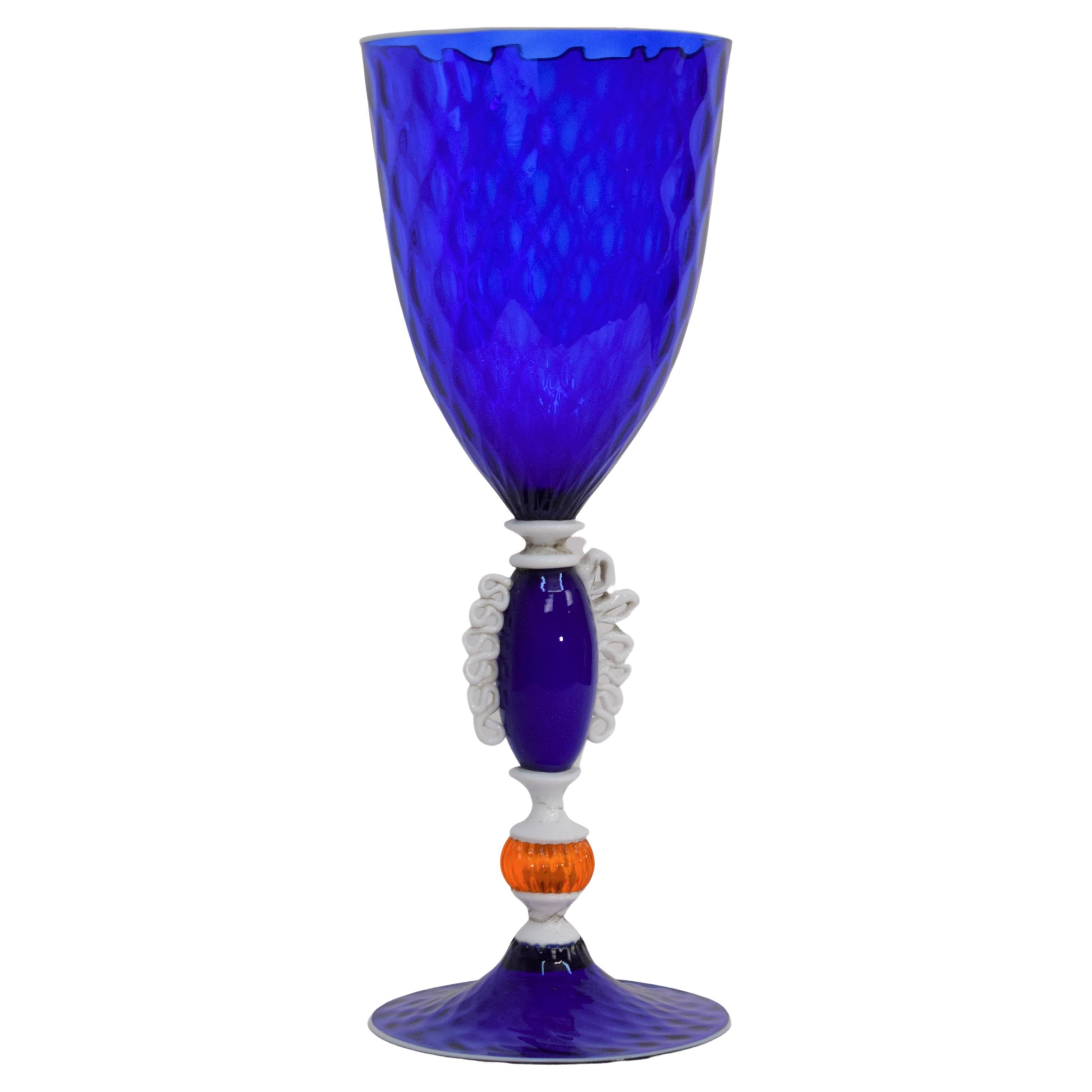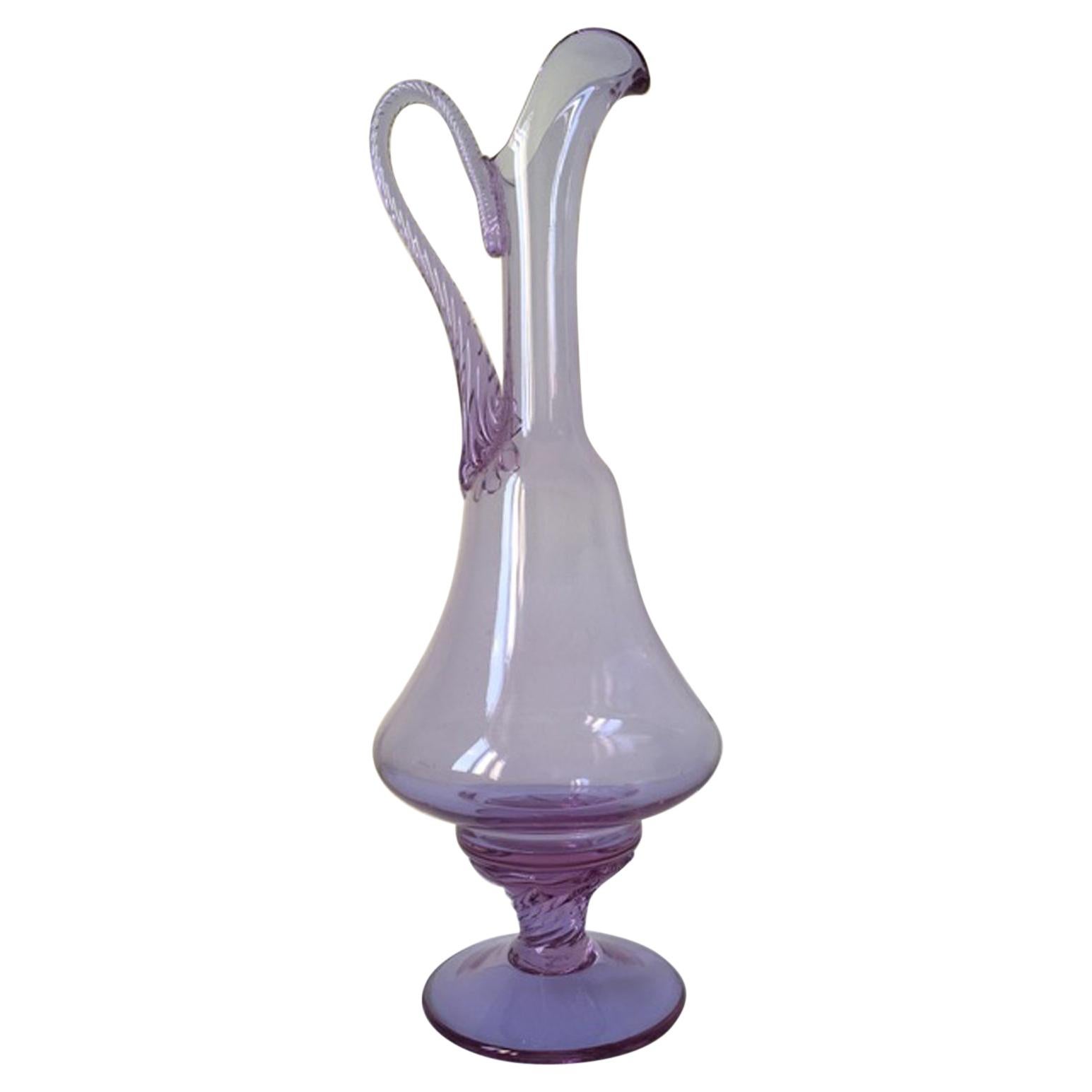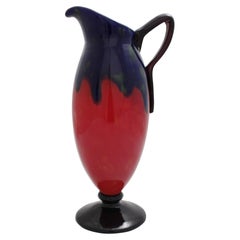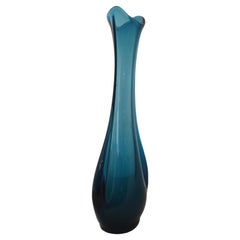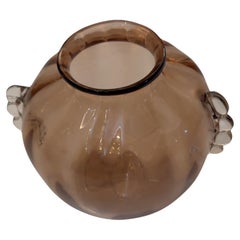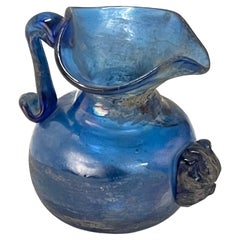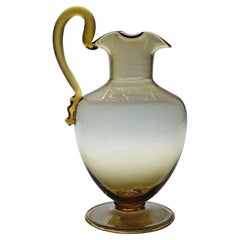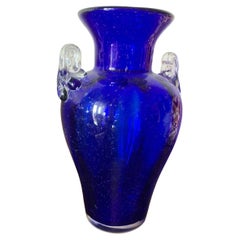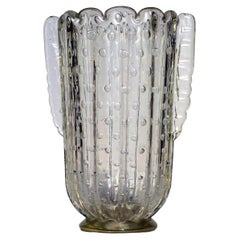Items Similar to Jar Murano, 1930, Italian. Attributed to Carlo Scarpa
Video Loading
Want more images or videos?
Request additional images or videos from the seller
1 of 15
Jar Murano, 1930, Italian. Attributed to Carlo Scarpa
$3,800
£2,867.76
€3,283.15
CA$5,359.26
A$5,883.80
CHF 3,069.59
MX$71,202.16
NOK 38,472.55
SEK 36,251.26
DKK 24,507.81
About the Item
Murano
Attributed to Carlo Scarpa
Carlo Scarpa
Scarpa was born in Venice. Much of his early childhood was spent in Vicenza, where his family relocated when he was 2 years old. After his mother's death when he was 13, he moved with his father and brother back to Venice. Carlo attended the Academy of Fine Arts where he focused on architectural studies. Graduated from the Accademia in Venice, with the title of Professor of Architecture, he apprenticed with the architect Francesco Rinaldo. Scarpa married Rinaldo's niece, Nini Lazzari (Onorina Lazzari).
However, Scarpa refused to sit the pro forma professional exam administered by the Italian Government after World War II. As a consequence, he was not permitted to practice architecture without associating with an architect. Hence, those who worked with him, his clients, associates, craftspersons, called him "Professor", rather than "architect".
His architecture is deeply sensitive to the changes of time, from seasons to history, rooted in a sensuous material imagination. He was Mario Botta's thesis adviser along with Giuseppe Mazzariol; the latter was the Director of the Fondazione Querini Stampalia when Scarpa completed his renovation and garden for that institution. Scarpa taught drawing and Interior Decoration at the "Istituto universitario di architettura di Venezia" from the late 1940s until his death. While most of his built work is located in the Veneto, he made designs of landscapes, gardens, and buildings, for other regions of Italy as well as Canada, the United States, Saudi Arabia, France and Switzerland. His name has 11 letters and this is used repeatedly in his architecture.
One of his last projects, the Villa Palazzetto in Monselice, left incomplete at the time of his death, was altered in October 2006 by his son Tobia. This work is one of Scarpa's most ambitious landscape and garden projects, the Brion Sanctuary notwithstanding. It was executed for Aldo Businaro, the representative for Cassina who is responsible for Scarpa's first trip to Japan. Aldo Businaro died in August 2006, a few months before the completion of the new stair at the Villa Palazzetto, built to commemorate Scarpa's centenary.
In 1978, while in Sendai, Japan, Scarpa died after falling down a flight of concrete stairs. He survived for ten days in a hospital before succumbing to the injuries of his fall. He is buried standing up and wrapped in linen sheets in the style of a medieval knight, in an isolated exterior corner of his L-shaped Brion Cemetery at San Vito d'Altivole in the Veneto.
In 1984, the Italian composer Luigi Nono dedicated to him the composition for orchestra in micro-intervals A Carlo Scarpa, Architetto, Ai suoi infiniti possibili.
We have specialized in the sale of Art Deco and Art Nouveau and Vintage styles since 1982. If you have any questions we are at your disposal.
Pushing the button that reads 'View All From Seller'. And you can see more objects to the style for sale.
Carlo Scarpa (2 June 1906 – 28 November 1978) was an Italian architect, influenced by the materials, landscape and the history of Venetian culture, and by Japan. Scarpa translated his interests in history, regionalism, invention, and the techniques of the artist and craftsman into ingenious glass and furniture design.
Why are there so many antiques in Argentina?
In the 1880 – 1940 there was a grate wave of immigration encouraged by the periods of war that were taking place.
1st World War took place between 1914 and 1918
2nd World War took place between 1939 and 1945
The immigrants options were New York or Buenos Aires. Tickets were cheap and in Buenos Aires they were welcomed with open arms, as it was a country where everything was still to be done.
Argentina was the country of new opportunities, labour was needed and religious freedom was assured, in many cases the of the family travel first until they were settled and then the rest of the family members join them.
In the immigrant museum “Ellis Island Immigrant Building” in New York you can se the promotional posters of the boats that would take them to a new life.
Between the years 1895 and 1896, Argentina had the highest DGP (gross domestic product) per capita in the world according to the Maddison Historical Statistics index, this situation arose due to the large amount of food being exported to European countries, which were at war.
The Argentinean ships left the port of Buenos Aires with food, but they returned with furniture, clothes and construction elements, (it´s common to see this the old buildings of the historic neighbourhood of San Telmo, the beams with the inscription “Made in England)”, as well as many markets that were built in Buenos Aires, such us the San Telmo Market, whose structure was brought by ship and afterwards assembled in 900 Defensa Street.
With the great influence of European immigrants living in the country, the children of the upper classes travelled to study in France, resulting in the inauguration of “La Maison Argentinienne”, on 27th of June 1928, in the international city of Paris, which hosted many Argentinians that were studying in Frace.
It´s the fourth house to be built after France, Canada and Belgium, being the first Spanish-speaking one. Still in place today (17 Bd Jourdan, 75014, Paris, France). Many of the children of these wealthy families who attended international art exhibitions, museums and art courses abroad, took a keen interest in the European style. This is why Buenos Aires was at the time referred as “The Paris of South America”.
Between the years 1890 and 1920 more than a hundred Palaces were built on Alvear Avenue the most exclusive avenue in Buenos Aires. Today some of these palaces have been transformed into museums, hotels and embassies.
In the year 1936, the Kavanagh building was inaugurated, it was the tallest reinforced concrete building in South America.
During 1994 the American Society of Civil Engineers distinguished it as an “international engineering milestone”, and it´s now considered a World Heritage of Modern Architecture.
At the time was common to hire foreign architects such as Le Corbusier, who visited Buenos Aires/Argentina in 1929 and in 1948 he drew up the blueprints for a house built in La Plata City (which was declared a World Heritage Site).
In 1947, the Hungarian architect Marcelo Breuer designed “Parador Ariston” in the seaside city of Mar del Plata. After an Argentinean student at Harvard University convinced him to come to Argentina. He worked on an urban development project in the Casa Amarilla, area of La Boca.
The Ukrainian architect, Vladimiro Acosta, arrives in Argentina in 1928 and worked as an architect until que moved to Brazil.
Antonio Bonet, a Spanish architect who worked with Le Corbusier in Paris, arrives in Argentina in 1937, where he carried out several architectural works and in 1938 designs the well-known BFK chair.
Andres Kálnay, of Hungarian origin, made around 120 architectural masterpieces, among which the former Munich brewery stands out, he even made the furniture’s design.
The German architect, Walter Gropius, director of the Bauhaus, lived in Argentina, where he wrote articles for “Sur” magazine and founded in Buenos Aires, an architectural firm with Franz Möller, who was also an architect, where he built two houses.
At the same time several famous designers decided to immigrate to Argentina, among them we can find the well-known French designer, Jean-Michel Frank, who arrived in the country in 1940 and also worked for the Rockefeller family.
Special pieces were made, which were sold exclusively in the country, such as the well-known German company “WMF”, who sold their products by catalogue, which were chosen by the ladies of high society in the list of wedding gifts, as well as the pieces designed by Christofle.
The Swiss sculptor Alberto Giacometti, made special pieces for Argentinean mansions.
In 1904 the first Jansen branch outside Paris was established in Buenos Aires, as the Argentinean clientele demanded a large amount of furniture, from the end of the 19th century to the mid-20th century.
In 1970, the brand Rigolleau Argentina made pieces authorised by Lalique.
The brands Maple and Thompson also set up shop in the country.
The French plastic artist, Marcel Duchamp moved to Argentina in 1918-1919.
Glass signed Gallé, Charder, Leverre, Schneider, Muller and other French firms. They were bought in flower shops and were given to ladies with beautiful floral arrangements.
Some furniture manufacturers travelled to international fairs and bough the patterns to produce the furniture in Argentina, such as the furniture firm Englander and Bonta, who bought the patterns ins Italy.
It is worth mentioning that in Argentina we have the largest community of Italians outside of Italy, as it is estimated that 70 percent of the inhabitants have at least one Italian descendant, followed by Spanish immigrants.
The most Important furniture stores in Argentina:
Comte is founded in 1934 (under the direct management of Jean Michel Frank in 1940).
Nordiska (Swedish company established in 1934).
Churba in 1960, a company that brought foreign designers to present their furniture in the country:
Denmark: (Arne Jacobsen, Finn Juhl, Bender Madsen, Ejner Larsen, Poul Kjaerholm, Hans Wegner)
Sweden: (Hans Agne Jakobsson, Gustavsberg)
United States: (Herman Miller)
Finland: (Lisa Johansson, Folke Arstrom, Tapio Wirkkala, Alvar Aalto, Timo Sarpaneva)
Swedish Factory: (Orrefors)
Italy: (Littala, Vico Magistretti, Emma Gismondi, Gae Aulenti, Angelo Mangiarotti, Elio Martinelli, Gianna Celada, Angelo Mangiarotti, Mario Bellini, Carlo Scarpa)
Finland: (Olivia Toikka)
Plata Lappas (Lappas Silver): a goldsmith shop founded in 1887 in Argentina by Alcibiades Lappas of Greek origin.
In 2019, in Argentina took place “the Art Deco world congress”, in which we participated as hosts invited by Geo Darder, founder of the Copperbridge – Foundation, in which prominent people from all over the world attended to learn about Art Deco in Argentina.
Argentina currently has more than 100 Art Deco buildings and another 90 Art Nouveau buildings throughout the city of Buenos Aires.
Argentina is a country that has not been involved in many wars, which is why it has been a refuge for works of art and antiques from different periods of time, unlike European countries. That is way many collectors, museums and antique dealers from all over the world visit it, you should not miss the opportunity to visit this great country.
Laura Guevara Kjuder, architect.
- Attributed to:Carlo Scarpa (Designer)
- Dimensions:Height: 10.24 in (26 cm)Diameter: 4.73 in (12 cm)
- Style:Art Deco (Of the Period)
- Materials and Techniques:
- Place of Origin:
- Period:
- Date of Manufacture:1930
- Condition:Wear consistent with age and use.
- Seller Location:Ciudad Autónoma Buenos Aires, AR
- Reference Number:Seller: V-321stDibs: LU6785236751672
About the Seller
5.0
Vetted Professional Seller
Every seller passes strict standards for authenticity and reliability
Established in 1982
1stDibs seller since 2022
40 sales on 1stDibs
Typical response time: <1 hour
- ShippingRetrieving quote...Shipping from: Ciudad Autónoma Buenos Aires, Argentina
- Return Policy
Authenticity Guarantee
In the unlikely event there’s an issue with an item’s authenticity, contact us within 1 year for a full refund. DetailsMoney-Back Guarantee
If your item is not as described, is damaged in transit, or does not arrive, contact us within 7 days for a full refund. Details24-Hour Cancellation
You have a 24-hour grace period in which to reconsider your purchase, with no questions asked.Vetted Professional Sellers
Our world-class sellers must adhere to strict standards for service and quality, maintaining the integrity of our listings.Price-Match Guarantee
If you find that a seller listed the same item for a lower price elsewhere, we’ll match it.Trusted Global Delivery
Our best-in-class carrier network provides specialized shipping options worldwide, including custom delivery.More From This Seller
View AllJar Schneider, France, 1922, With application, Design Marbrines MEDIDA
By Charles Schneider
Located in Ciudad Autónoma Buenos Aires, C
Vase Sign: Schneider
Schneider
Charles Schneider (1881-1953) studied art in two of most prestigious French school of the Arts. First in the School of Fine Arts in Nancy, then in the...
Category
Vintage 1920s French Art Deco Glass
Materials
Art Glass
Murano , 1930, Italian
Located in Ciudad Autónoma Buenos Aires, C
Murano
We have specialized in the sale of Art Deco and Art Nouveau and Vintage styles since 1982. If you have any questions we are at your disposal.
Pushing the button that reads 'Vi...
Category
Vintage 1930s Italian Art Deco Centerpieces
Materials
Murano Glass
$2,550
Murano , 1930, Italian, Style Art Deco
Located in Ciudad Autónoma Buenos Aires, C
Murano
We have specialized in the sale of Art Deco and Art Nouveau and Vintage styles since 1982. If you have any questions we are at your disposal.
Pushing the button that reads 'Vi...
Category
Vintage 1930s Italian Art Deco Centerpieces
Materials
Murano Glass
Vase , Italian, 1925, Art Deco
Located in Ciudad Autónoma Buenos Aires, C
We have specialized in the sale of Art Deco and Art Nouveau and Vintage styles since 1982. If you have any questions we are at your disposal.
Pushing the button that reads 'View All ...
Category
Vintage 1920s French Art Deco Glass
Materials
Murano Glass
Vase in Murano, Italian, 1920
Located in Ciudad Autónoma Buenos Aires, C
Vase in Murano
We have specialized in the sale of Art Deco and Art Nouveau and Vintage styles since 1982. If you have any questions we are at your disposal.
Pushing the button that ...
Category
Vintage 1920s Italian Art Deco Crystal Serveware
Materials
Murano Glass
Murano, 1940, Attributed to Flavio Poli, Italian
By Flavio Poli
Located in Ciudad Autónoma Buenos Aires, C
Murano
We have specialized in the sale of Art Deco and Art Nouveau and Vintage styles since 1982. If you have any questions we are at your disposal.
Pushing the button that reads '...
Category
Vintage 1940s Italian Art Deco Centerpieces
Materials
Murano Glass
You May Also Like
"A Scavo" Seguso Vetri d'Arte, Artistic Glass Vases Murano, Italy, 1960s
By Seguso Vetri d'Arte
Located in Roma, IT
Murano glass vase "A SCAVO" attributable to Seguso Vetri d'Arte Murano, Italy, circa 1960s. Elegant in shape and extraordinary craftsmanship, with the use of the Scavo technique to r...
Category
Mid-20th Century Italian Mid-Century Modern Vases
Materials
Glass, Art Glass, Blown Glass, Murano Glass
Vetro Soffiato Glass Jug Tiziano, Venini Murano ca. 1930s
By Venini
Located in Berghuelen, DE
Vetro Soffiato Glass Jug Tiziano, Venini Murano ca. 1930s
A large 'Vetro Soffiato' (blown glass) art glass jug in smoke-hued transparent glass. Manufac...
Category
Vintage 1930s Italian Mid-Century Modern Decorative Bowls
Materials
Art Glass
Barovier vase in bulging Murano glass from 1940
By Barovier
Located in Palermo, IT
Striking cobalt blue Murano glass bullicant showcases a sophisticated bell shape, embellished with elegant scrolling handles in contrasting clear Murano glass. This luxurious combina...
Category
Vintage 1940s Italian Mid-Century Modern Vases
Materials
Murano Glass, Stained Glass
1930 Barovier "Bullicante" Murano Glass Art Deco Vase
By Barovier
Located in Brescia, IT
Art Deco vase
Barovier
Murano, 1930
Colorless "bullicant" glass
Special lugs with hoods typical of the taste of the period
Perfetto stato conservativo
Category
Vintage 1930s Italian Art Deco Glass
Materials
Murano Glass
Murano Glass Globet, 1930s
Located in Palermo, PA
Murano glass globet, 1930s.
Dimensions: H= 25 cm; D= 9 cm.
Category
Vintage 1930s Italian Mid-Century Modern Glass
Materials
Glass
Italy 1960 Post-Modern Murano Blown Glass Bottle
Located in Brescia, IT
This is an elegant shaped bottle hand made in Murano, Venice in 1960 in Murano blown glass. The piece is very charming and on it are visible the signs of the handwork.
The bottle has...
Category
Mid-20th Century Italian Post-Modern Glass
Materials
Blown Glass
More Ways To Browse
Vintage Blue Glass Jar
Pro Forma
Jena Schott
Jenaer Glass
Kosta Boda Wine Glasses
Kosta Boda Wine
Lalique Tray
Lalique Tumbler
Lalique Water Glass
Le Verre Français On Sale
Lobmeyr Goblet
Murano Coupe Glass
Murano Glass Tazza
Murano Rope Tray
Murano Tazza
Poschinger Glass
Red Glass Cordial Glasses
Rhine Wine Glasses
